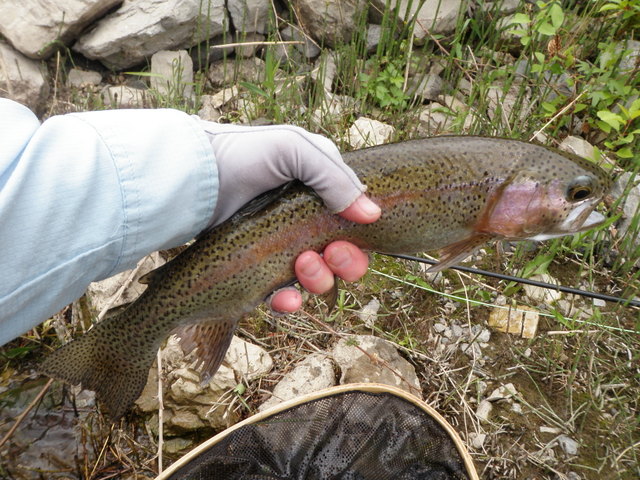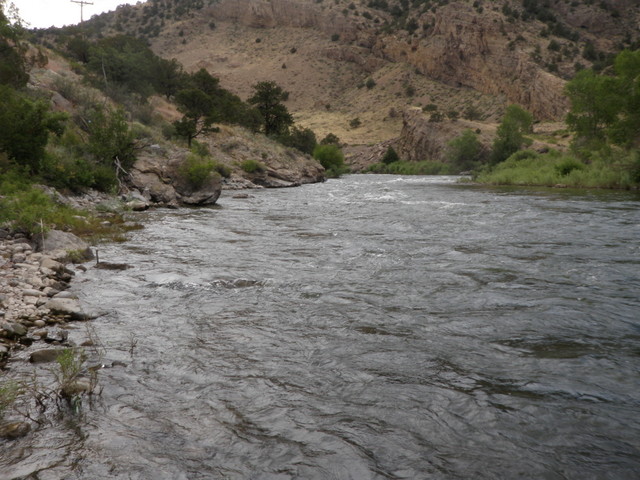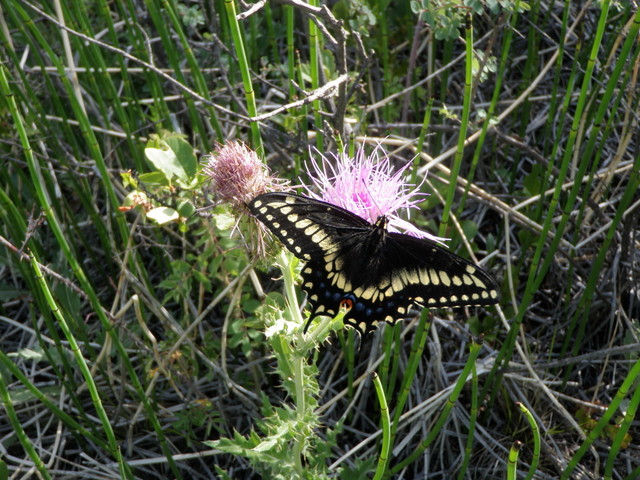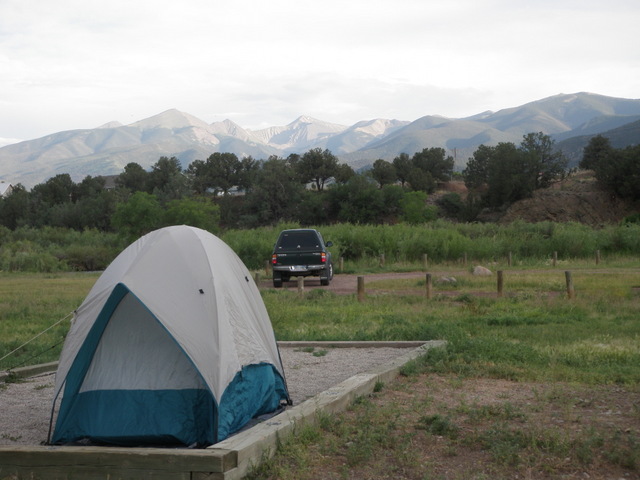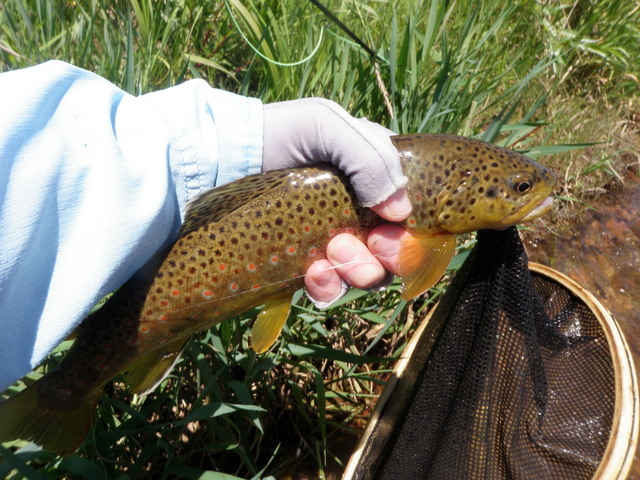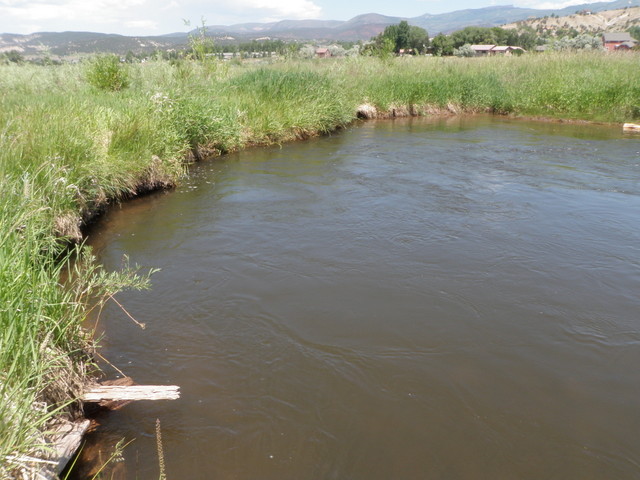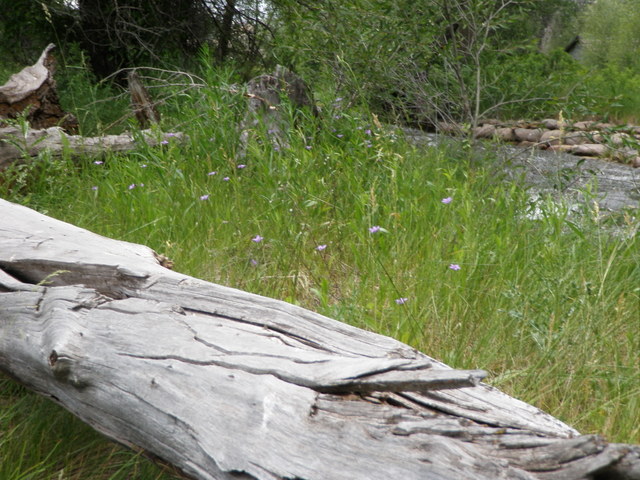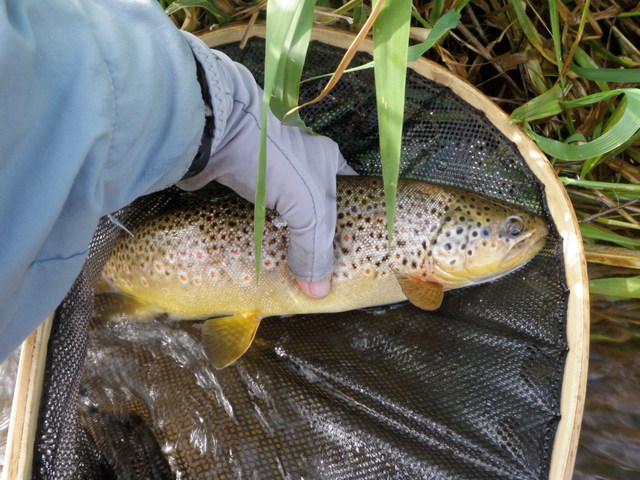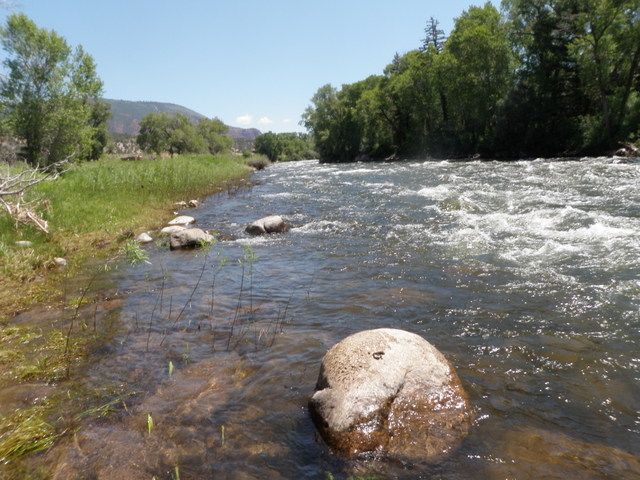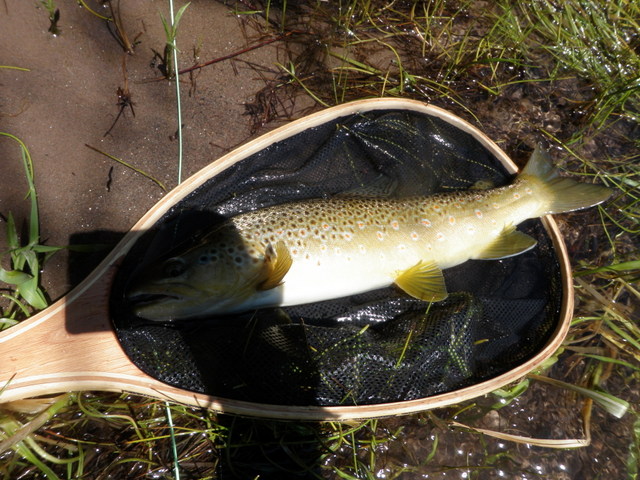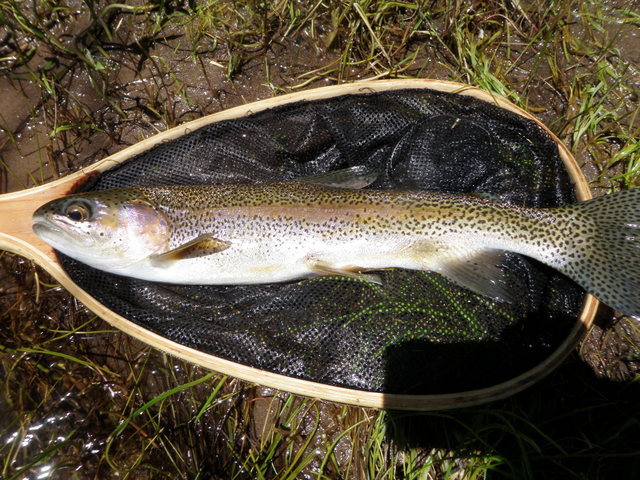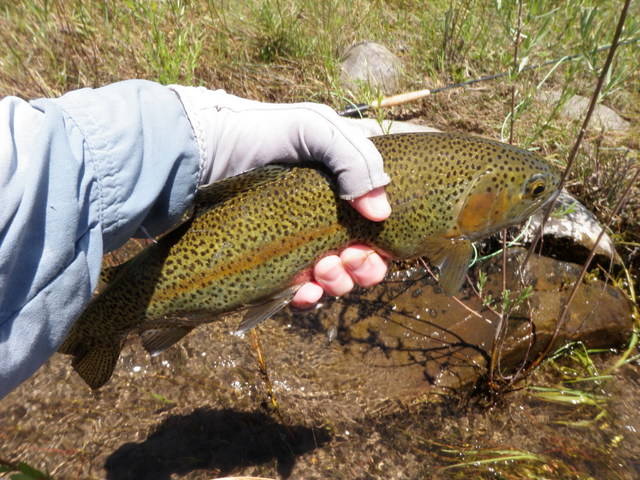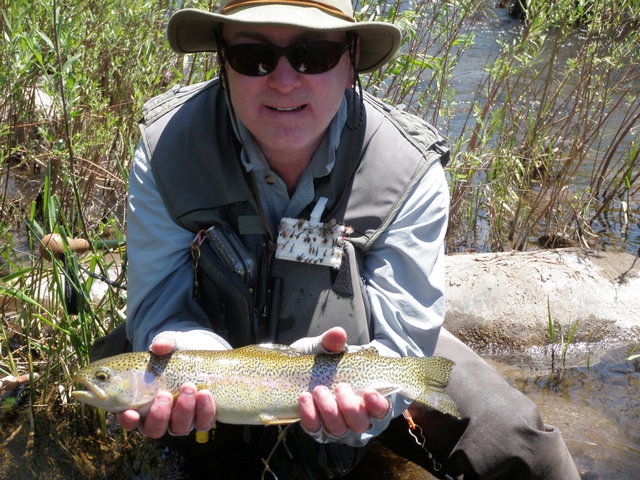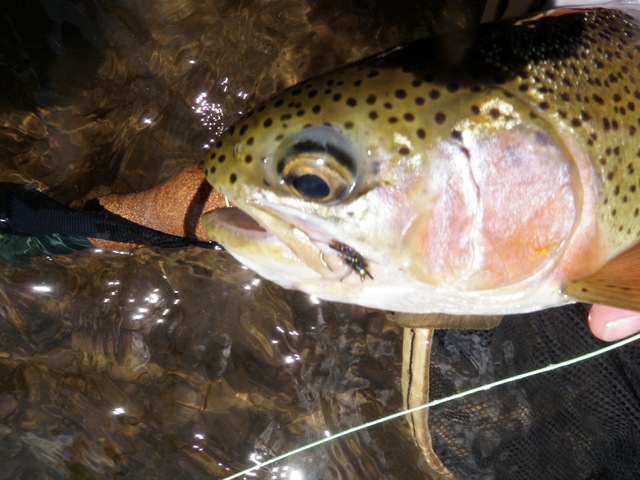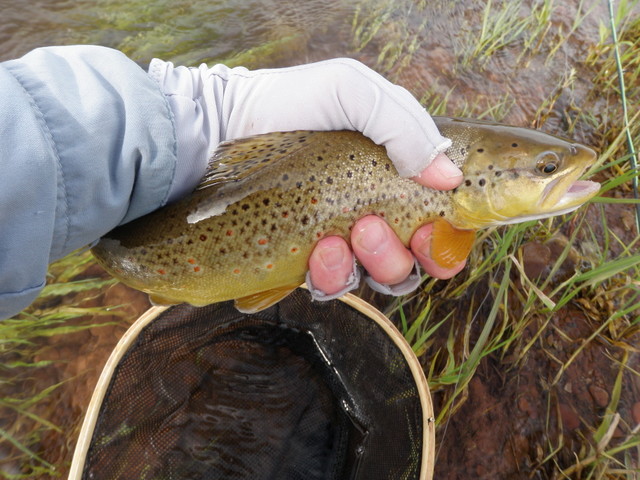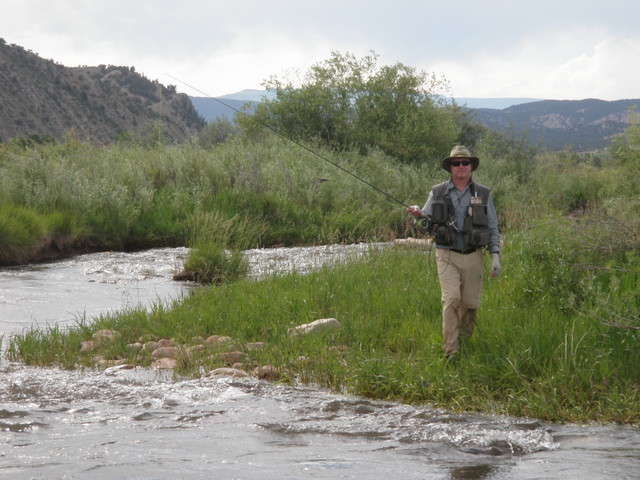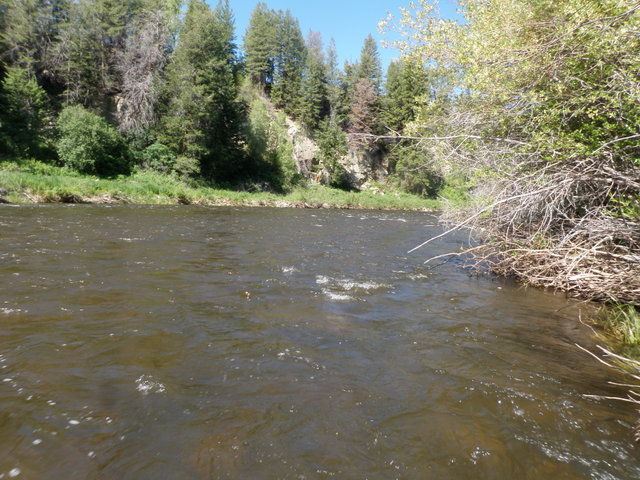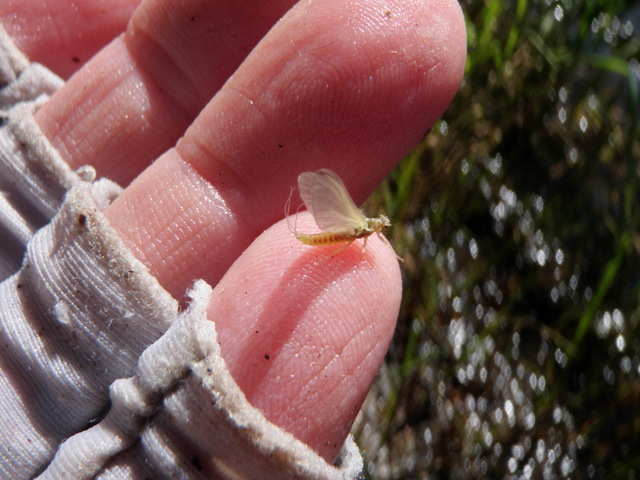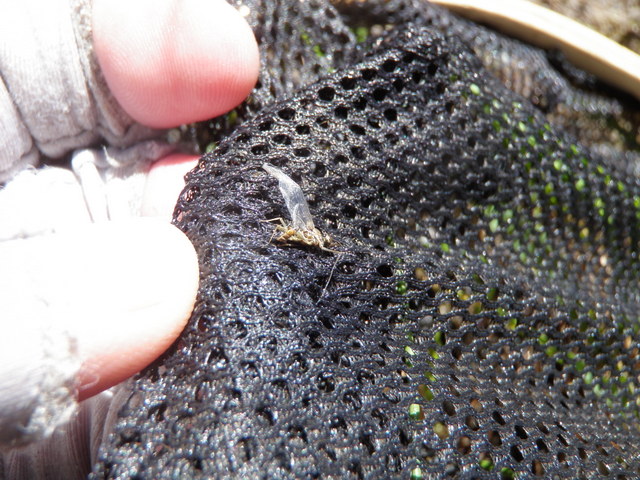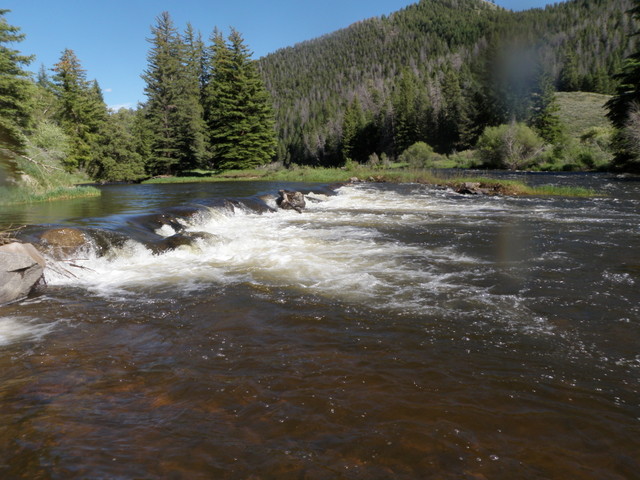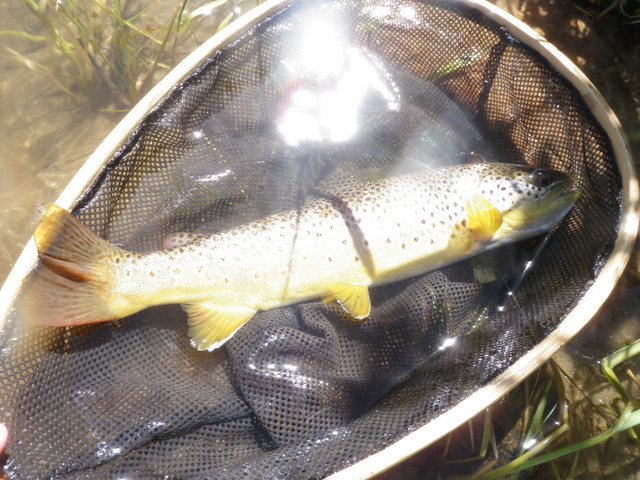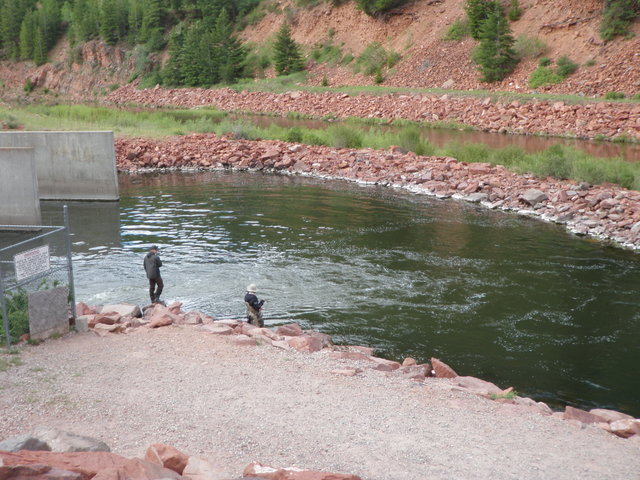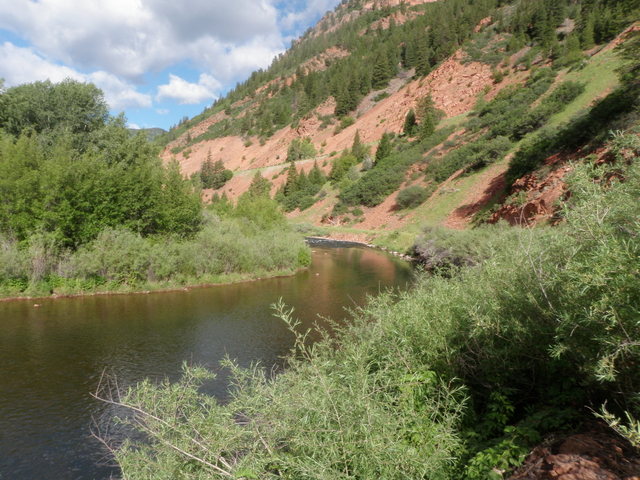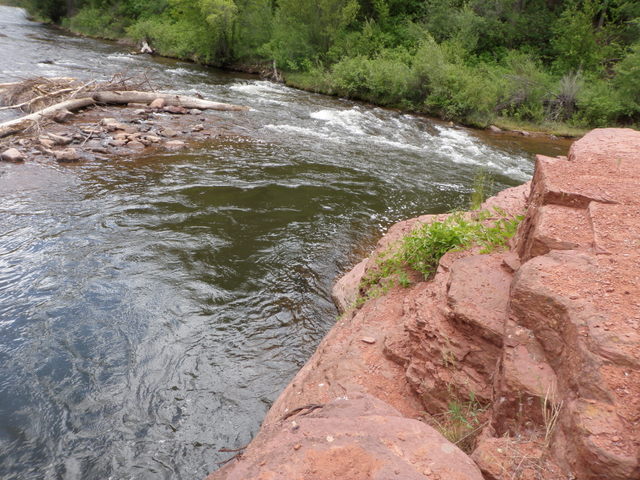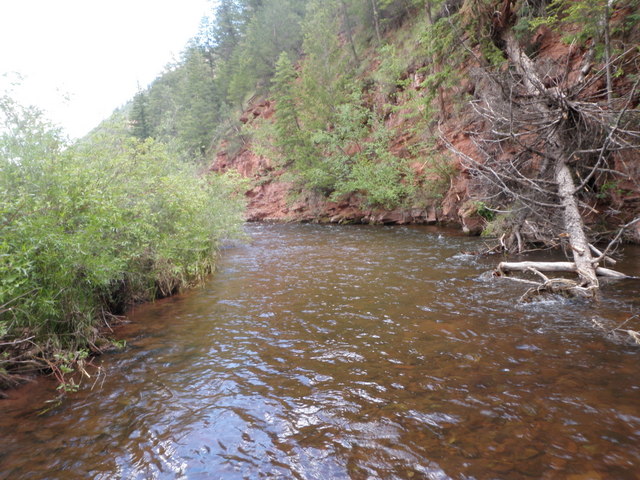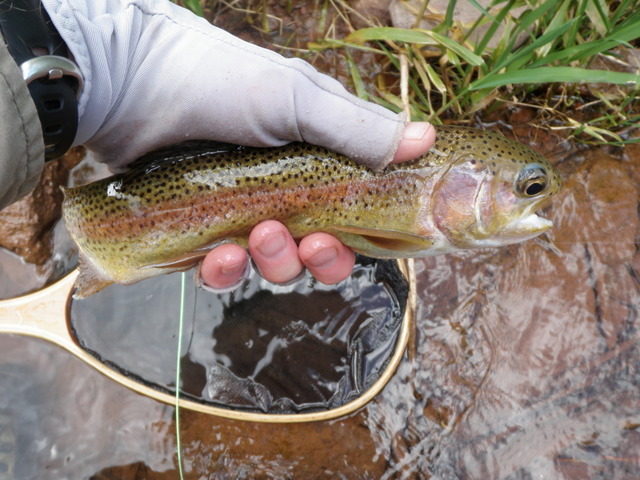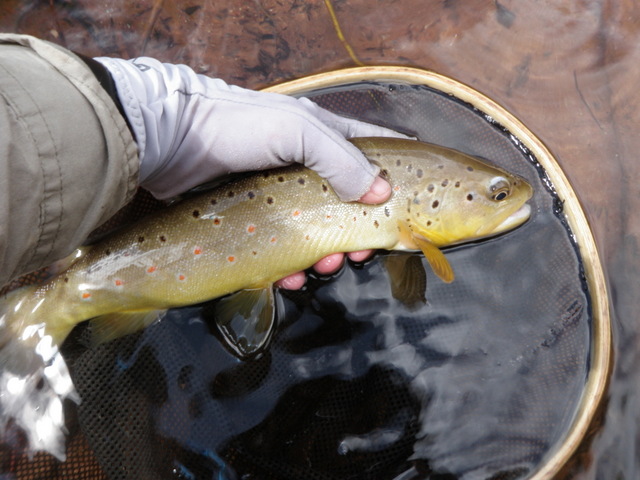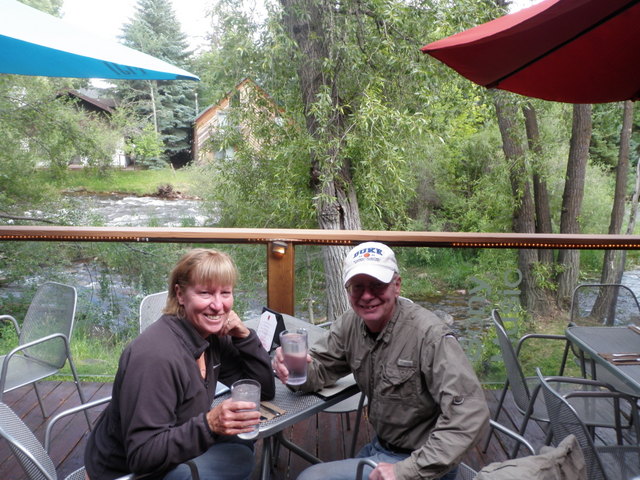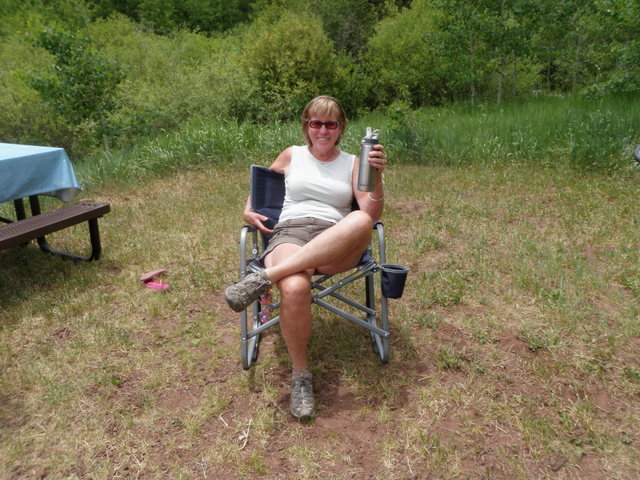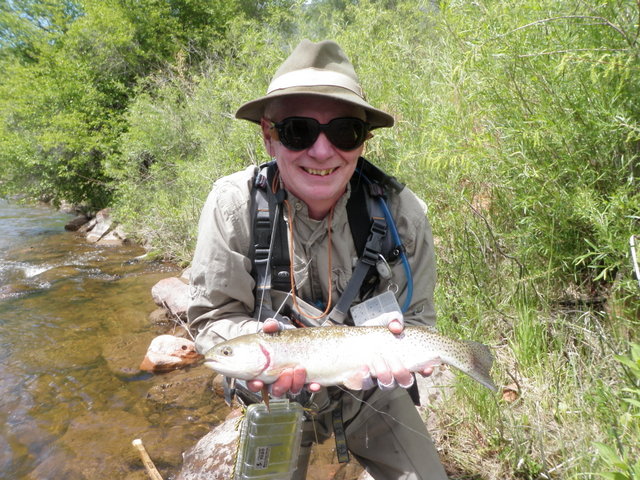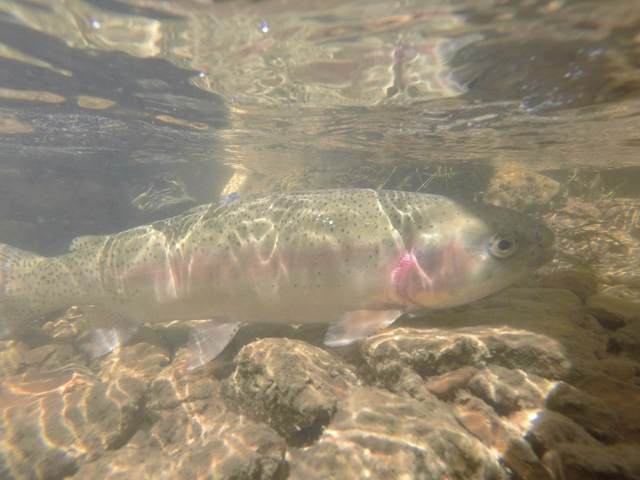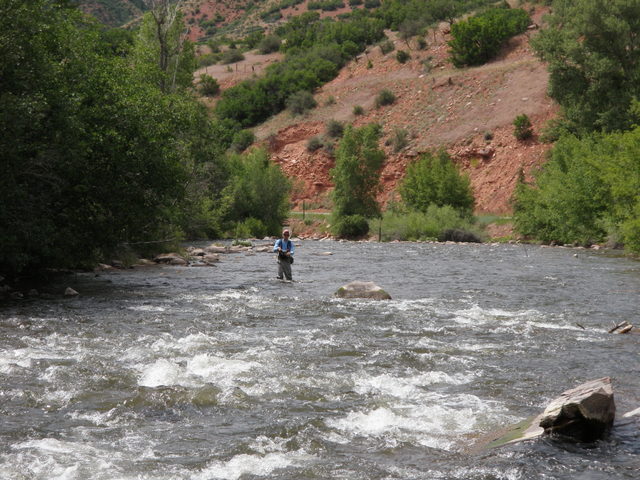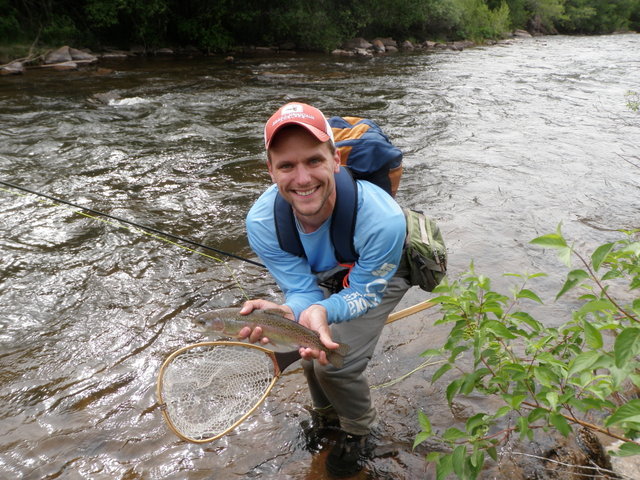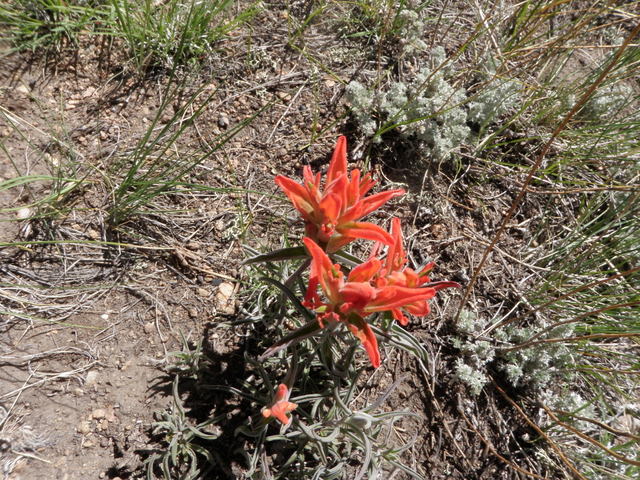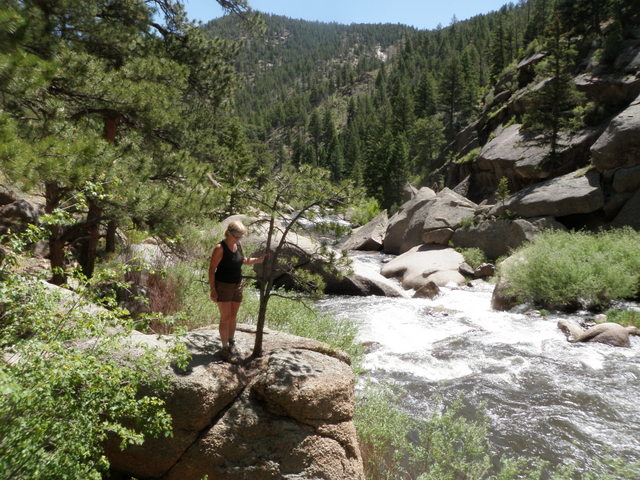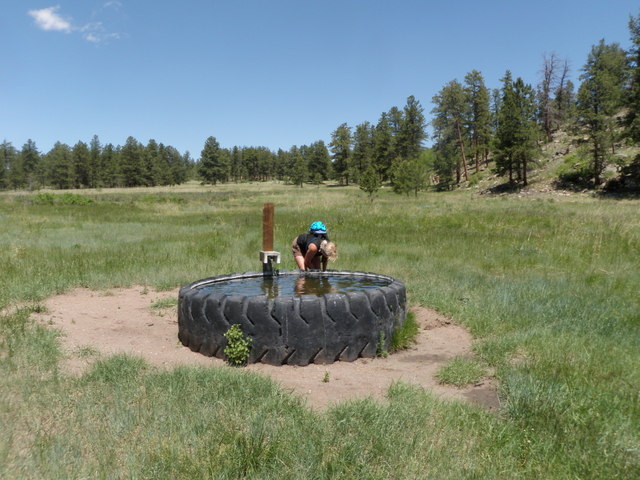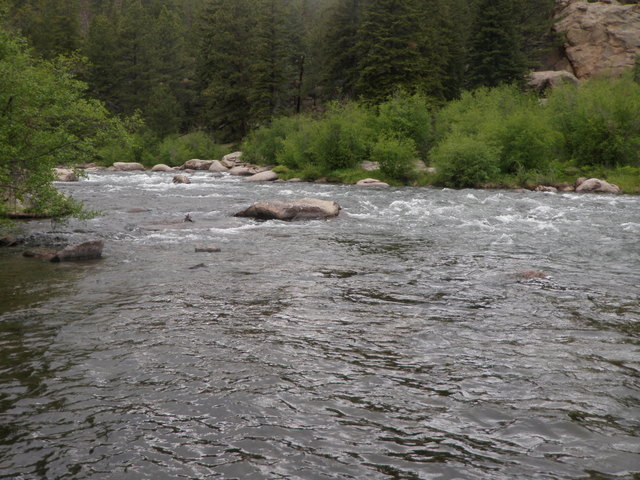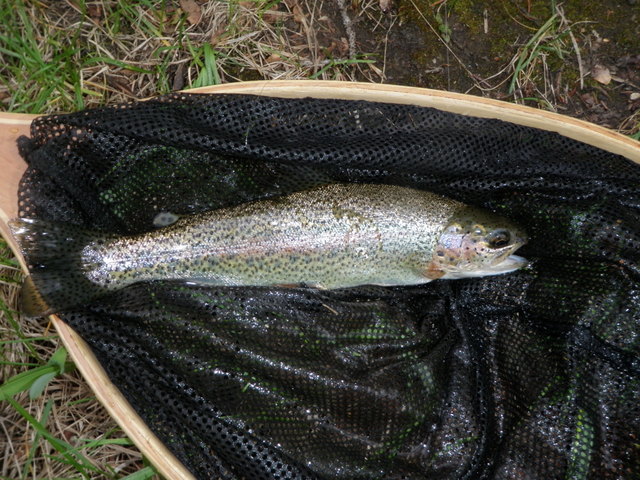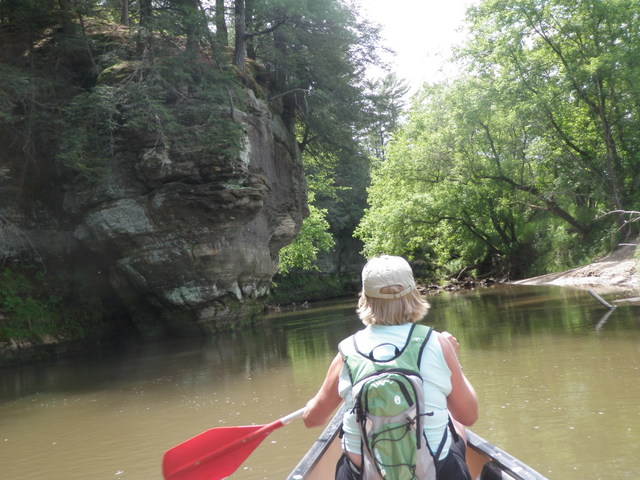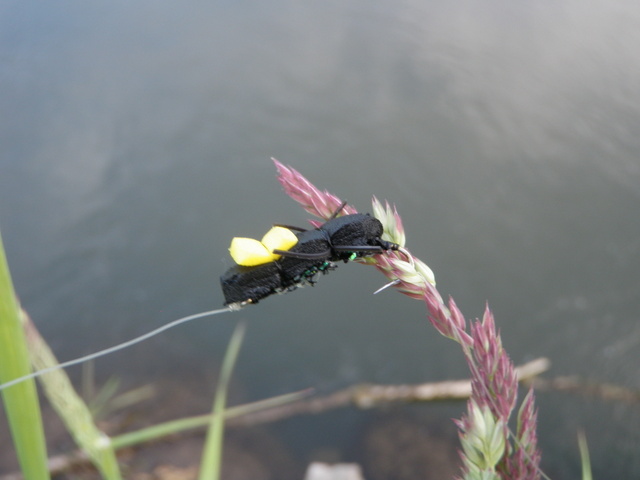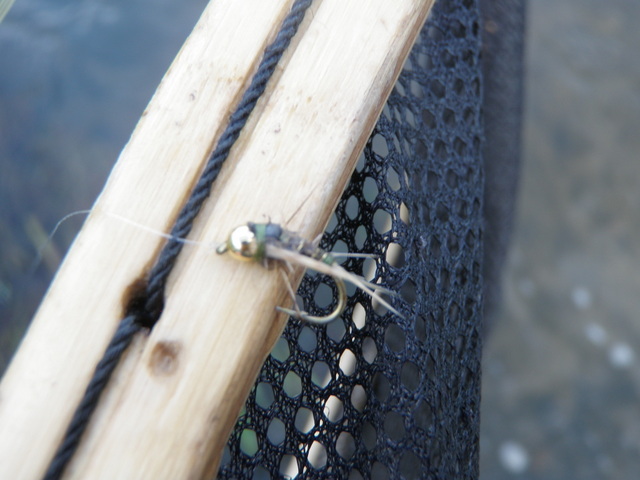Time: 1:00PM – 5:30PM
Location: Lunch rock upstream to my favorite island below Chafee – Fremont county line
Fish Landed: 16
Arkansas River 07/09/2014 Photo Album
The perfect wave. A powder day of skiing. Edge fishing a river in Colorado as runoff subsides. Participants in the related sports go to great lengths to experience these peak events. Well, perhaps edge fishing doesn’t rank with the others, but it is a lot of fun and on the few occasions when I’ve timed it perfectly, it leaves me thirsting for more. This describes my mindset after a three hour sampling of outstanding edge fishing on the Eagle River on Saturday, July 5. I immediately began formulating a plan to experience more excellent edge fishing even as the streamflows on the major freestone rivers began to trend downward.
My desire to return to a river while edge fishing remained in its prime spurred me to work efficiently, and I completed my closing responsibilities by the end of Tuesday and formulated a camping and fishing plan for the rest of the week. I decided to pack the car on Wednesday morning and drive to the Arkansas River to check on the fishing there. The reports from Royal Gorge Angler suggested that edge fishing was superb with flows still at 1600 cfs and five feet of visibility. I would fish the Arkansas on Wednesday afternoon and then stay overnight at one of the campgrounds along the river. If the fishing was excellent, I planned to remain and fish there again on Thursday, and then drive to Hornsilver Campground Thursday evening, and this would position me to fish the Eagle River on Friday. If the fishing was less than excellent on Wednesday, I would move to the Eagle River on Thursday morning and fish there for two days.
Everything went according to plan, and I departed Stapleton by 8:45AM on Wednesday morning. I elected to drive the route through Colorado Springs as I targeted the Vallie Bridge Campground as my camping destination for Wednesday evening, and I felt the drive on I25 south was a bit easier than heading southwest on US 285. Unfortunately when I descended the long hill from Royal Gorge to the river, I discovered that the water was quite turbid and there was at best one foot for visibility along the bank. Would I even be able to fish on the Arkansas River? I began to chastise myself for not going directly to the Eagle River.
I drove west on US 50, and the river remained quite murky. When I reached the turn for Vallie Bridge, I detoured briefly and examined the accommodations. There were quite a few tent pads, fire pits and picnic tables and only one appeared to be claimed. The bathroom was along the river and quite a distance from the campsites, and there were only a few cottonwood trees, thus providing minimal shade for two or three campsites. I decided I could make this work, but I also concluded that I would check out Rincon Campground seven or eight miles upriver.
As I neared Rincon I passed Badger Creek, a small tributary that enters the river from the north, and here I discovered the source of the discolored water. Badger Creek was dumping coffee colored water into the river, and the river above this point was much clearer with more than five feet of visibility. I was excited to make this discovery and continued on in a more upbeat frame of mind past the Rincon Campground. The campground appeared to be empty at 12:30PM, so I resolved to stop and explore the option of camping there once my day of fishing ended.
With my renewed positive attitude about fishing the Arkansas River, I decided to begin fishing at a large rock that juts into the river near a bend in the highway above the Wellsville Bridge. I refer to this as lunch rock, as I return to this spot to eat my lunch when I am fishing in this area. I’d purchased a sandwich in Canon City, so on this day, I began by eating at lunch rock before beginning my day of fishing.
It was a hot sunny day with little cloud cover as I pulled on my waders and rigged my Loomis five weight rod. The river was indeed high at 1600 cfs, and the only viable place to fish was along the rocky bank that separated the river from highway 50. I decided to tie on a Chernobyl ant for flotation and visibility and then added a copper john since I’d gotten away from this fly, and I wanted to experiment to see if it produced results similar to a salvation nymph; my early candidate for 2014 fly of the year. Like the salvation nymph, a copper john is a general attractor nymph and not a precise imitation of a single insect species.
I began working my way upstream from lunch rock, but the copper john wasn’t producing in water that seemed to be excellent holding water for Arkansas River brown trout, so I snipped it off and replaced it with a beadhead hares ear nymph. The beadhead hares ear nymph has historically been one of my best producers on the Arkansas River. Unfortunately I remained without any fish, so I relented and tied on a salvation nymph below the hares ear. The nymph combination spurred more interest, and I landed two modest-sized brown trout to finally get on the scoreboard. The hares ear by itself did not yield any fish, but once I added the salvation nymph, it began to produce, and I landed three more fish as I moved on, and all the fish grabbed the hares ear.
I heard what the fish were telling me and removed the salvation nymph and tied on a prince nymph as my top fly and moved the hares ear to the bottom. At the same time the Chernobyl ant wasn’t generating any interest, so I replaced it with a yellow Letort hopper since this fly produced for me on previous years during the edge fishing time period. Unfortunately the hopper did not attract interest and only grew saturated with water and sank forcing me to continually dry it to maintain buoyancy. I grew frustrated with this routine and exchanged the hopper for a chubby Chernobyl, and this fly stayed on my line for quite awhile along with the prince nymph and beadhead hares ear as I progressed up the river and landed more fish.
The chubby Chernobyl was performing its job well of floating and remaining visible and even resulted in a fish caught, but after I reached eleven fish landed, the wing absorbed water, and the fly began to sink. Once again I decided to make a change, and I replaced the chubby Chernobyl with a tan pool toy with yellow legs. The prince nymph had yielded one fish, so I replaced it with a black wet fly with a shiny body and kept the beadhead hares ear in place. This combination produced the last five fish in late afternoon, and all fell for the hares ear nymph.
The catch rate slowed over the last couple hours, however, I did land some sizable brown trout, and that offset the reduced quantity of fish netted. On the day I landed sixteen fish and three were rainbows and the remainder brown trout. Two of the rainbows were around 15 inches and the longest brown measured 14 inches. On the surface this would seem to be a great afternoon of fishing, but numbers can be deceiving. I covered a huge amount of water, and many areas that looked like prime trout habitat did not produce. It was a fun afternoon, but it wasn’t quite the hot fishing that the web site described, or that I remembered from several past experiences.
At 5:30 I found a path to climb the steep bank to the road and hiked a mile back to the car. I decided to check out the campgrounds that I’d passed and stay along the Arkansas for the night, but I also resolved to move on to the Eagle River on Thursday morning. When I pulled into Rincon I discovered a mass of river rafters setting up camp in all the available sites, so I continued down US 50 through Howard to Vallie Bridge. Four or five sites were also occupied by whitewater enthusiasts here, but plenty remained, so I made my claim of site no. 1 and unloaded my gear.
Sixteen fish is a decent day, so perhaps I was taking a risk to move to the Eagle River, but I couldn’t get Saturday’s three hours of success out of my mind, and I needed to know whether this could be repeated.

